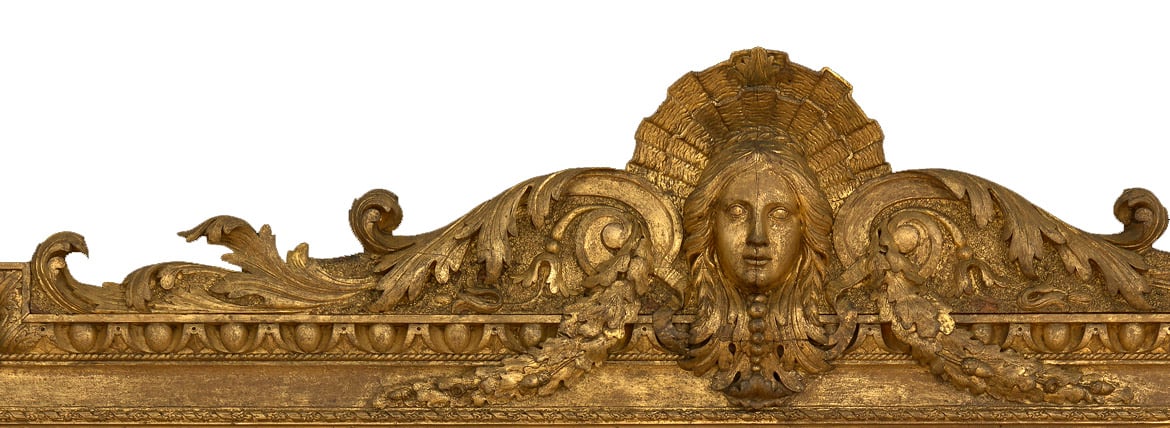
Frames in the Royal Collection
A guide to the history of frames in the Royal Collection
Framemakers
Because of the ubiquitous nature and common usage of styles it is often difficult to trace a frame back to an individual maker or workshop, although the fact that many artists had their preferred framers has helped with their identification. We have currently identified over 200 from the eighteenth-century to the present day from around the world.
Many of the framemakers, especially those of the nineteenth-century, made several different styles of frames for the Collection. The frames were made throughout the United Kingdom, as well as overseas, either for the artists themselves, or for the Royal Family. Some of the most common names are Thomas Ponsonby (1793-1857) and William Brooks & Son (1866-1904), who produced frames in London; Doig, McKechnie & Davies (1857-84) in Edinburgh, Hay & Lyall (1842-1918) were in Aberdeen and Valdemar Kleis (c.1863-1912) worked in Copenhagen. As well as popular designs of the day there are also unique and exceptional frames made by William Waters (c.1722-67), Paul Petit (c.1724-57), Thomas Allwood (c.1738-99), Foord & Dickinson (1859-99), and J. & W. Vokins (1837-1910).








